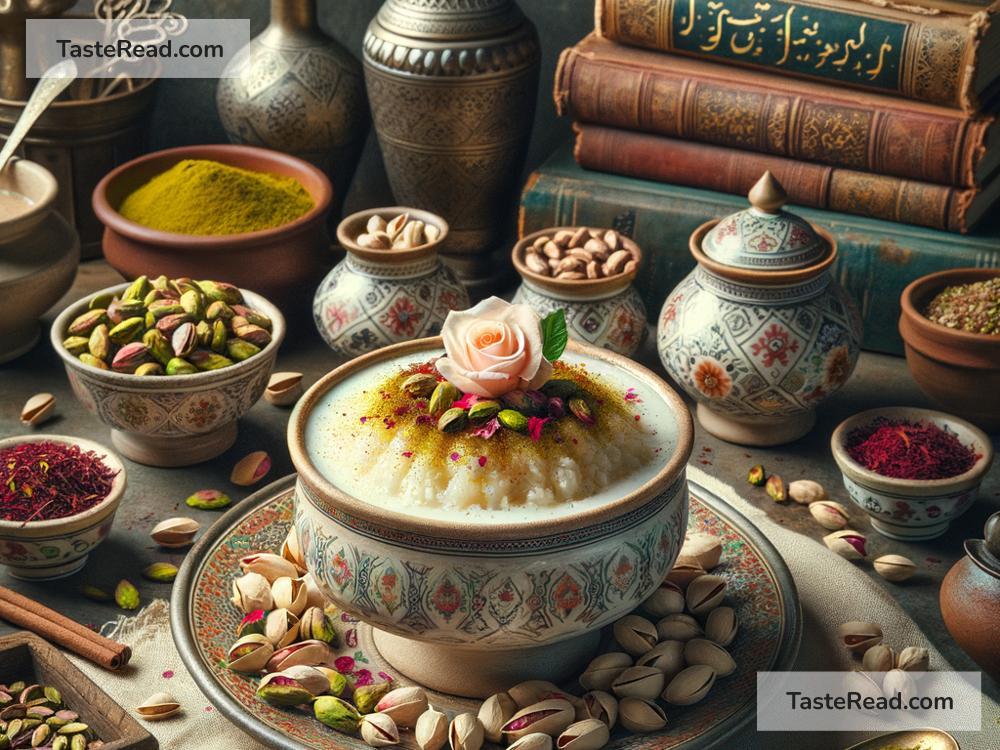Journeying Through Ancient Rice Pudding Recipes in Iran
Rice pudding—a simple yet delightful dessert loved across the world—has a rich history in Iran. For centuries, rice pudding has been more than just a dish; it’s a cherished tradition, intertwined with culture, celebration, and stories of the past. Let’s take a step back in time and explore how ancient Persian rice pudding recipes shaped the culinary heritage of Iran.
The Roots of Rice Pudding in Persian Cuisine
Iran, historically known as Persia, is home to one of the oldest culinary traditions in the world. Situated along trade routes connecting the East and West, Persian chefs developed unique recipes featuring ingredients from faraway lands. Rice, introduced to Persia from the Indian subcontinent centuries ago, became a staple in Iranian cuisine.
With the introduction of rice came creativity. One such creation was rice pudding, a rich, comforting dish made with rice simmered in milk or water, sweetened with sugar, and flavored with exotic spices. While simple in preparation, rice pudding in Iran had layers of complexity in taste and significance.
Rice Pudding for Special Occasions
In Iranian culture, food is more than sustenance; it holds deep meaning. Rice pudding, known in Persia as “Sheer Berinj” (sheer means milk, and berinj means rice), was traditionally prepared during religious ceremonies, celebrations, and family gatherings.
One notable occasion was Nowruz, the Persian New Year. Families cooked Sheer Berinj to mark the beginning of spring and to invite prosperity into their homes. The creamy rice pudding symbolized purity and renewal, aligning perfectly with the themes of Nowruz. Children eagerly awaited this beloved dessert, served alongside other traditional Persian dishes.
Rice pudding was also cooked during Ramadan to break the day’s fast. Its wholesome and gentle ingredients nourished the body after hours of fasting, making it a special part of the evening meal.
Ancient Ingredients That Tell a Story
What makes Persian rice pudding unique is its use of ancient ingredients that were prized in Persia for their aroma and health benefits. Let’s take a closer look at what made the recipe special:
-
Rose Water: A signature element in Persian desserts, rose water adds a floral sweetness to rice pudding. In ancient Persia, rose water was considered precious. It was used for cooking, medicine, and even perfumery. Its delicate scent brought elegance to Sheer Berinj.
-
Saffron: Saffron, known as “red gold,” is a spice derived from the crocus flower. It gave rice pudding a golden hue and a subtle earthy flavor. Saffron was cultivated in Iran as far back as 3,000 years ago, and it still holds a revered place in Persian cuisine.
-
Cardamom: This aromatic spice added warmth and complexity to the dish. Cardamom traveled to Iran from India and became a staple in Persian cooking. Its bold yet comforting taste complemented the creamy texture of the rice pudding perfectly.
-
Almonds and Pistachios: For added richness, Persian cooks garnished rice pudding with chopped nuts like almonds and pistachios. These nuts were also symbols of abundance and luxury, often featured in meals for royalty.
Ancient Techniques for Cooking Rice Pudding
The preparation of Sheer Berinj required patience and care. First, rice was soaked in water to soften the grains. Then, it was cooked slowly with milk over low heat, allowing the flavors to blend and the texture to become creamy.
Traditionally, Persian households used large copper pots for cooking desserts like Sheer Berinj. Copper helped distribute heat evenly, ensuring the pudding didn’t scorch at the bottom. Adding sugar or honey for sweetness was common, though some older recipes used dates or raisins instead, as sugar wasn’t always readily available.
The final touch was garnishing the pudding with saffron threads, nuts, or a sprinkle of ground cinnamon. Each family might have its own twist on the recipe, adding extra ingredients or using heirloom techniques passed down through generations.
A Recipe That Stands the Test of Time
Fast forward to today, and Sheer Berinj is still enjoyed in modern Iran. While the ingredients and techniques might have evolved slightly, the traditions remain intact. Many Iranians prepare rice pudding for holidays, family reunions, and even casual dessert cravings.
Outside of Iran, Persian rice pudding has influenced the cuisines of neighboring countries. Variations of this dessert can be found in Turkey, India, and Arab nations, highlighting the way Persian culinary ideas traveled through trade and cultural exchange.
Cooking Your Own Persian Rice Pudding
If you’re inspired to try making Sheer Berinj at home, it’s simple enough—even for beginners. Here’s a quick outline:
Ingredients:
– 1 cup of rice
– 4 cups of milk
– 1/2 cup sugar
– 1 teaspoon rose water
– A few saffron threads (optional)
– Ground cardamom (optional)
– Chopped pistachios or almonds for garnish
Instructions:
1. Soak the rice in water for 30 minutes, then drain.
2. In a pot, cook the rice with 2 cups of milk over low heat, stirring occasionally.
3. Gradually add the remaining milk and sugar. Continue simmering until the mixture thickens.
4. Stir in rose water, saffron, and cardamom.
5. Serve warm or chilled, garnished with nuts.
The Legacy of Persian Desserts
Sheer Berinj is much more than a dessert—it’s a connection to Iran’s history, culture, and family traditions. Through its humble ingredients and aromatic spices, it tells a story of innovation, celebration, and love.
Next time you savor rice pudding, whether it’s Persian-style or from any other cuisine, take a moment to appreciate its ancient roots. By cooking Sheer Berinj, you’re becoming part of a centuries-old tradition that continues to bring joy to countless homes in Iran and beyond.
Enjoy your journey through the flavors of Persia!


